Elden Ring Piece-by-Piece: A Strong Foundation
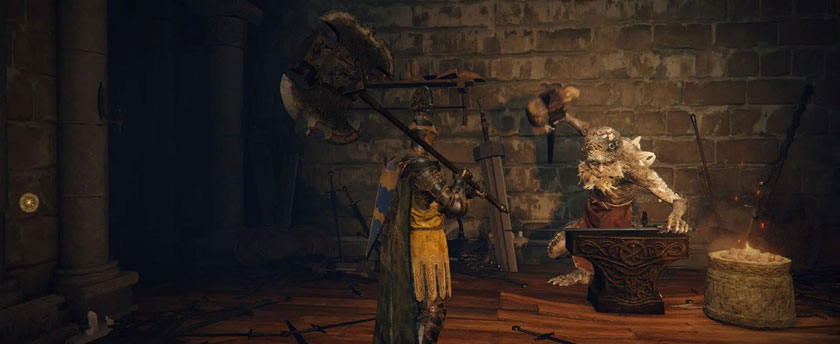
Back towards the end of March I wrote some glowing thoughts on the quality of Elden Ring. It was planned to be the first of at least two pieces, expecting to have at least a bit more to say once I had finished the game. The thoughts and opinions expressed in that post are, admittedly, a bit dishonest. They were rationalizations of things I recognized as flaws for other games, but twisted around to sound like compliments.
In other words, I wanted to try and convince myself why I’d been so light on this game despite committing crimes I’d otherwise be critical of elsewhere. The box art for Elden Ring might as well have the emblem of a recycling bin on it given just how much content is rehashed. Even Godrick, a unique character and the first of the Rune Bearers most players will likely face off against, has a clone locked away within one of the Evergaols.
There is a lot of recycled content in Elden Ring, but to simply point that out as a criticism is, I think, doing the game a disservice. This is partially due to the nature in which other games littered with recycled content are built, and by more closely looking at the manner in which Elden Ring is designed, I hope to highlight why so many more players are willing to tolerate it from From Software than they are the likes of Ubisoft or Activision.
Before we get that deep, however, we need to look at one of the earliest mixtures of praise and critique from the From Software fans themselves: core mechanics that are over a decade old.
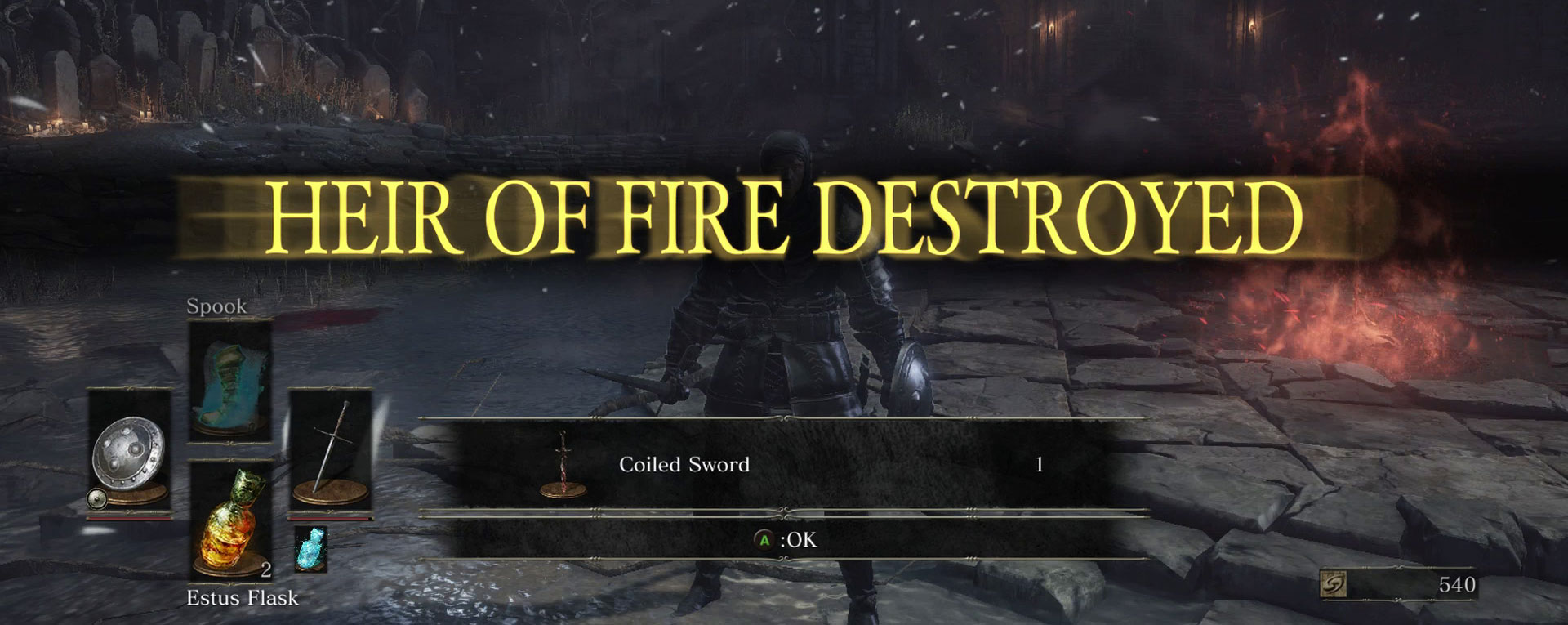
Once the gameplay trailer released last June there were observations that the game “looked just like Dark Souls”. Now, this isn’t too surprising for multiple reasons, the first of which is that everything looks like Dark Souls to someone these days, whether the comparison is warranted or not. The other is that this is From Software, and Elden Ring is going to be following the same general pattern as their prior games. Of course the gameplay would look similar.
Only it wasn’t just similar. Much of it was the same, all things considered. Players were pointing out specific attack animations and directly connecting them to carbon-copied special attacks from Dark Souls III. As it turns out, nearly every Ash of War, as we’d learn they were called, that was showcased in the trailer was lifted right out of Dark Souls III. Art assets and textures were recognized as well, and soon enough it became clear that From Software was recycling much of their prior work for this new title.
Though this, too, was nothing new. Even in Bloodborne, a game with a completely different setting and a new trick-weapon system that required every blade, whip, battle axe, halberd, and so on to have two alternate forms, had recycled animations and assets from Dark Souls. The most unique game From Software had produced in years was Sekiro: Shadows Die Twice, and that was in part due to the drastic departure the combat and mobility had taken from their past decade of works.
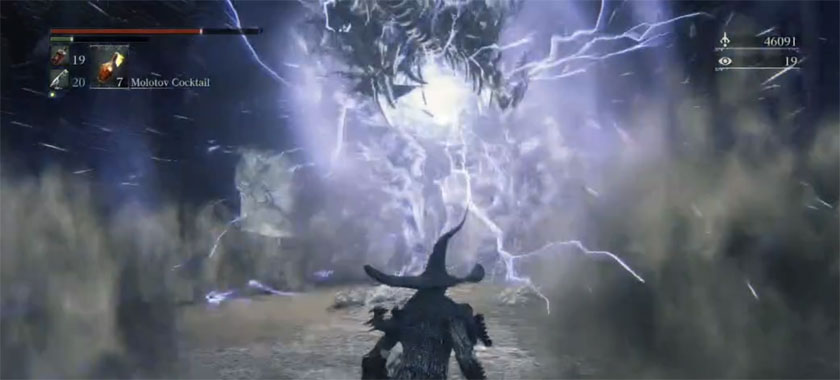
So the question becomes whether this is a problem or not, and I don’t think there’s a consistent answer. While you can point at some sequels that seemed to wipe off the table and start fresh, such as going from Resident Evil 3 to Resident Evil 4, you can point to plenty more such as the Mega Man or Street Fighter franchises, each seeming to gladly reuse code and assets from one game to another. Sports games have been pointed to for decades as an example of charging full price for a roster update every year, clearly reusing graphic assets with minor touch-ups to release the same game annually. However, in the world of video games, these simulations for jocks are more likely to be the victim of bullying rather than the other way around. We could point to the annual release of titles in the Assassin’s Creed or Call of Duty franchises, but their sales numbers betray how much these recycled assets actually factor into the sales or perception of each individual title.
What makes Elden Ring different, I think, are a combination of its core audience and the amount of time it has taken to develop the game. On one hand, the core audience of From Software’s recent output are looking for a very specific gaming experience, and therefore any deviation poses great risk. It makes sense to keep with a foundation they know and love. At the same time, that core audience is primarily made up of hobbyists and enthusiasts, dedicating more time to challenging and niche games than the “normies” or “casuals” that regularly spend their cash on Assassin’s Creed titles, Call of Duty releases, or Skyrim ports. The expectations are different, and with Elden Ring having been announced in 2019 and whose gameplay was finally revealed two years later, players were hungry to see what would be new and fresh in Hidetaka Miyazaki’s latest release.
Rather than see a drastic evolution like Sekiro, players were instead introduced to something… familiar. Or at least, in part.
It is at this point I should note that those displeased with these familiar animations and attacks were a minority. Whether they recognized these assets from a prior Dark Souls title or not, most players were excited. You can jump! You can ride a horse! Look how bright and beautiful the world is while still retaining that hint of melancholy! Check out these huge bosses! What are those ghostly figures that fight with you? Just how big is this world? How brutal are all these bosses?
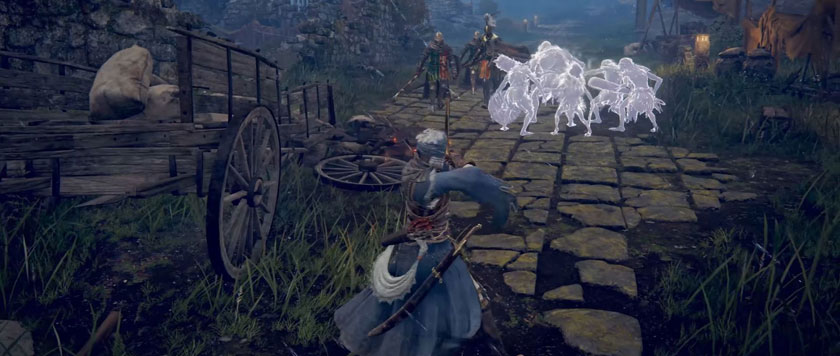
Elden Ring was not a massive leap in terms of its mechanics like Sekiro had been, but it is also rather diminutive to say it’s incremental. Additionally, many fans had bounced off of Sekiro’s increased and precise difficulty, thus leaving the familiar gameplay of Elden Ring to be a relief. However, I think it is important to note that the changes here aren’t as simple as adding a few gimmicks. The open-world adjustments, in particular, heavily impact the feel of Elden Ring compared to its predecessors, and I’ll be getting more into that in the next entry.
Really, one of the things that makes Elden Ring work as well as it does is the cautionary combat that From Software has become known for. There are many games that try to imitate what From does, but keeping a random enemy tucked away in an invisible alcove is misunderstanding From Software’s approach to environmental and encounter design. They certainly wish to “punish” the careless player, but in the majority of these situations it is the player’s panic that punishes them most. Many bad situations and ambushes can be escaped, so long as the player keeps calm and recovers.
It is the developers’ attention to detail that makes the Soulsborne games so enjoyable to explore, examining the environment closely for potential traps or ambushes. More often than not, the player can then turn this knowledge to their advantage, luring the game’s hostile forces into the path of these traps or getting the drop on those in hiding. It’s not just about punishing careless play, but rewarding clever and intelligent tactics.
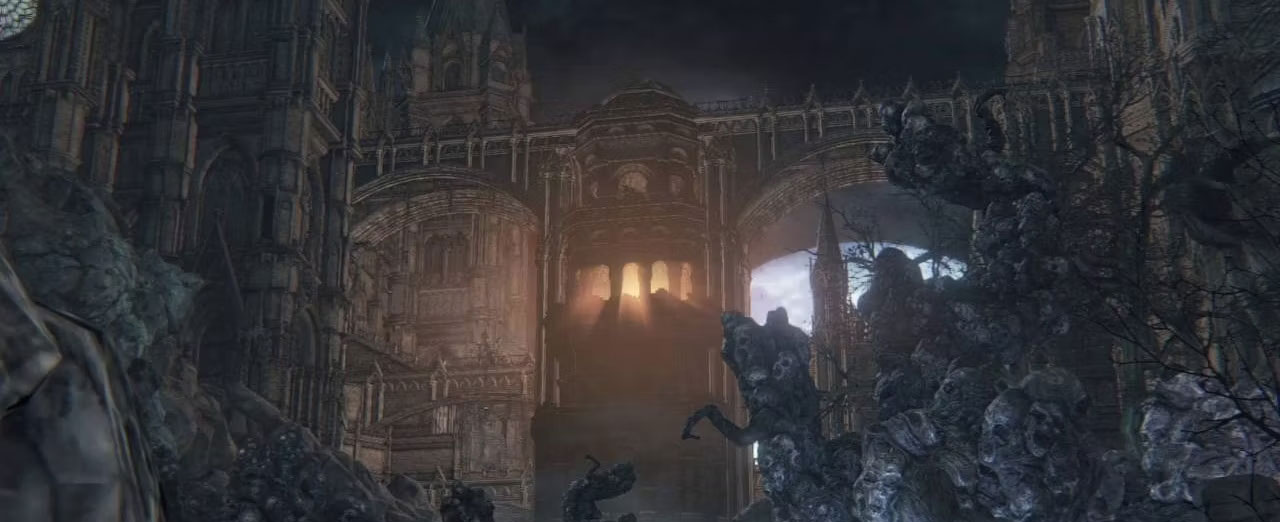
Granted, it doesn’t always work out, and some environments can feel cheap or malicious. In Bloodborne, for example, the exterior of Mensis bathes the world in a maddening gaze that the player must hide from, all while being hunted down by vicious lycanthropes that give birth to carnivorous worms unless defeated in a specific way. Once the player escapes the range of the Sauron-like gaze they must endure a gauntlet of boulder throwing giants leading into a hall infested with giant spiders. Such segments feel as if the designers have a grudge against the player, perhaps taking out their crunch time frustrations by conceiving a slew of tortuous pathways.
These sections are never quite impossible, however, and with enough time and experience across the separate From games you might notice the many ways in which the developers are generous to the player. Enemies will typically give off a visual or audio cue that they’ve spotted the player, waiting at least a moment before lunging forth on the offensive. With very specifically scripted exceptions – again, ones that can often be spotted by observant players – most enemies can easily be sprinted past, and all foes have a range in which they stop pursuing the player. In comparison to a game like, say, Darksiders 3, where foes will continue chasing you down for great distances, the From Software games are designed for players to speed by familiar territory in order to grab lost souls or blood echoes before charging onward.
Such generosity can be picked up on in combat as well. Most encounters can be handled carefully by kiting individual enemies, and even beasts that attack in swarms have obvious tells and lengthy recovery. Once more, the game punishes the careless but rewards the observant or cautious. As the games progress forward they will make it more difficult to kite and intentionally match more difficult foes together, but rarely does the game seem to mash encounters together without a proper sense of balance.
Note that I say rarely, not never.
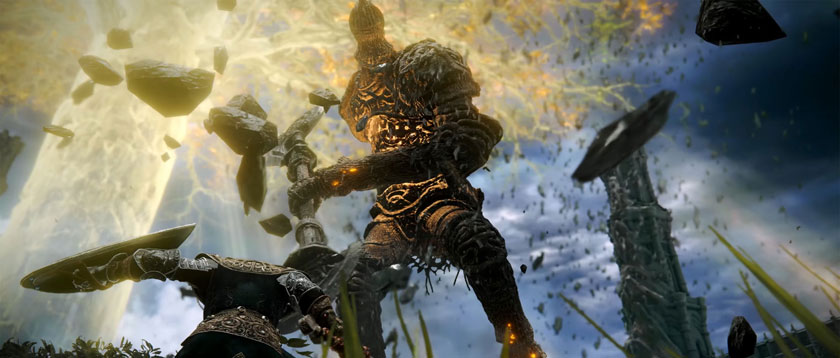
At the end of the day, however, I think it’s the tit-for-tat nature of the combat that really gives From Software their legs. No matter which game you play, it’s always about the cautious exchange of blows. Enemies may be designed to strike with confident, sweeping or crushing attacks that convey an intimidating amount of power, but they will inevitably leave themselves open. It’s not just about “learning the attack pattern”, it’s about learning the patience and judgment to wait for your opportunity. If you slightly flub a dodge, for example, then do not feel so desperate as to rush in and get a hit before missing your chance. Such actions will result in being caught up in a counter by the opponent. Similarly, do not be desperate to recover one’s health. Be willing to risk a death while focusing on getting some distance instead.
These are general, basic rules, but they apply equally to Dark Souls, Bloodborne, and Elden Ring.
Keep in mind that the games don’t all have the same precise combat system, nor do they all feel the same. I’ll go into greater detail later, but Bloodborne is, again, a good example. From the start the player is able to hold twenty blood vials for restoring health, indicating that the player is expected to get wounded and need to heal often. Simultaneously, it creates a reliance upon the blood that leans into the game’s narrative themes and the downfall of the Hunters. The same can be said for rally, where a player has a limited amount of time to regain lost health by violently retaliating against their aggressor. The player can swiftly dodge without worrying about encumbrance, but the lone buckler shield in the game is all but worthless compared to the value of a riposting pistol, let alone the other heavy duty projectiles or experimental spells.
While Elden Ring has far more in common with the Dark Souls lineage than either Bloodborne or Sekiro, it still diverts from the popular trilogy enough so as to carve an identity of its own. The advantage to building upon these prior games, however, is that the developers already have a good basis from which to deepen their scope while increasing the breadth.
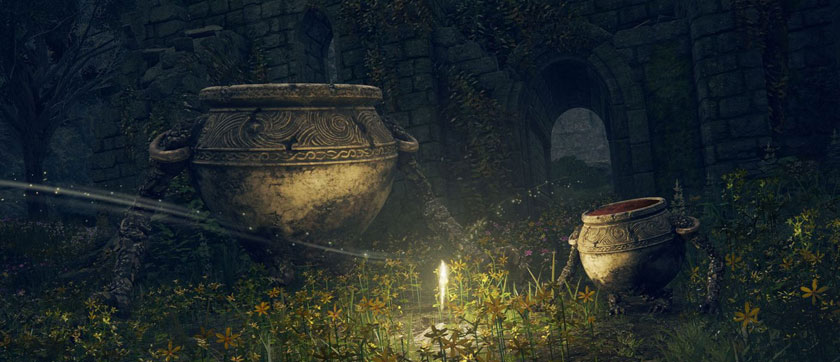
Which is, ultimately, my point in this introduction. I’ll be returning to discuss the combat in more detail later, but in respect to how Elden Ring’s adjustments have positively iterated on the past while simultaneously making some foolish decisions. As I examine the different aspects of Elden Ring that make it so enjoyable – or frustrating – it is important to note that it could only do these things by starting with the decade-long experience that came before. At the same time, much of that experience will prove to hold Elden Ring back in its own ways. Additionally, though From Software were able to build one of the largest games available to be played, there’s still the question of whether or not it was too much.
I hope, in the coming weeks, to give a full breakdown and analysis of this game and give a fair evaluation of all of its positive and negative qualities. That I am not a die-hard From Software fan should, I hope, allow readers of all kinds to understand my perspective as well. The conversation surrounding these games tends to be in the extremes, and I hope to appeal to those that would meet in the middle. Some may enjoy the games more than others, but hopefully my own perspective and arguments will be understood.
Next time, we’ll be looking specifically at the open-world and the importance of a player engaging with the game’s setting.


